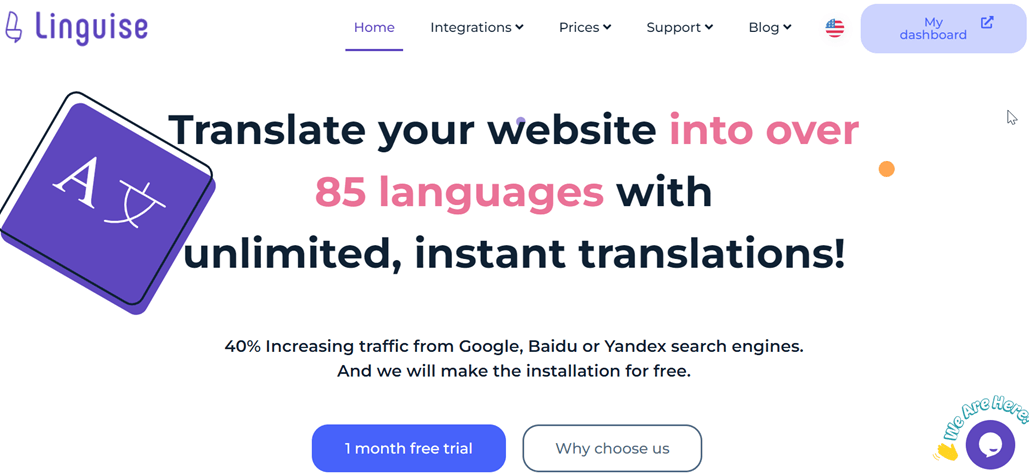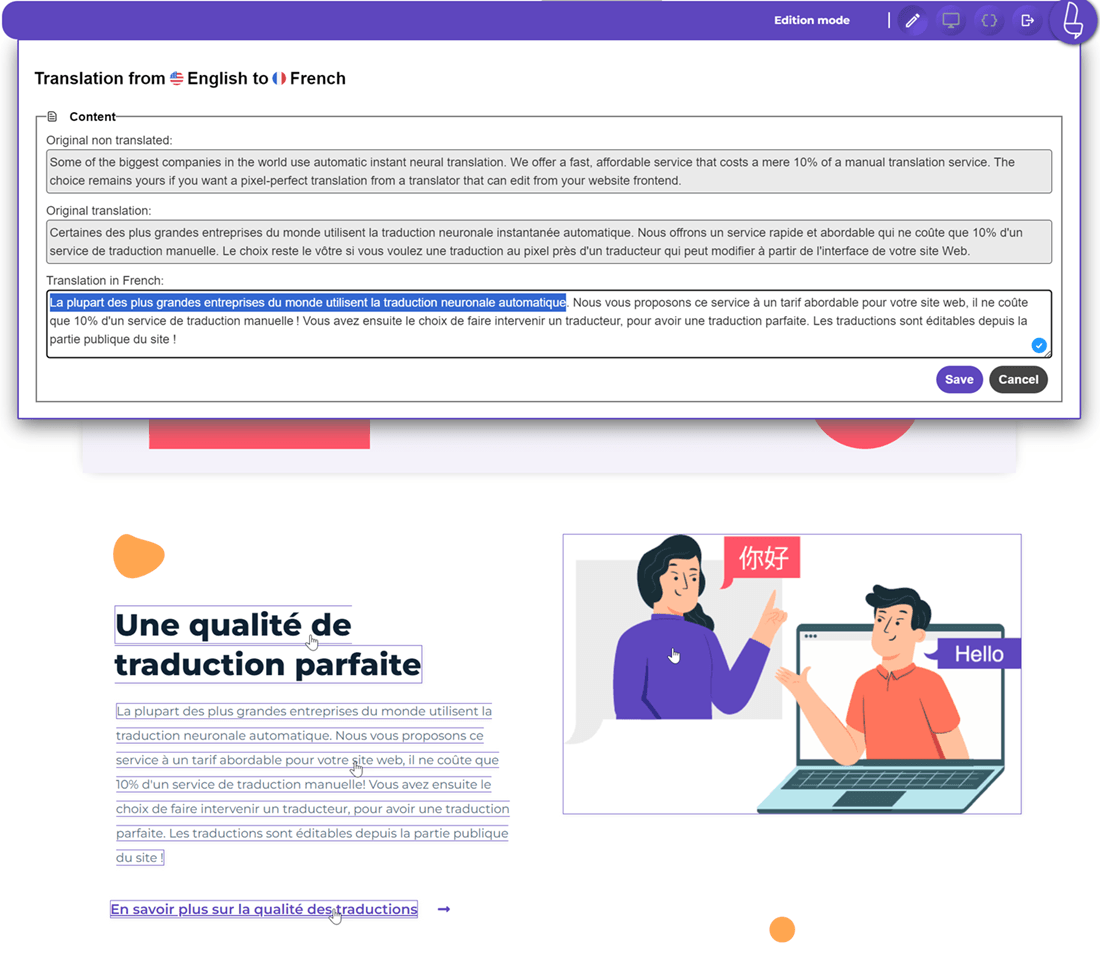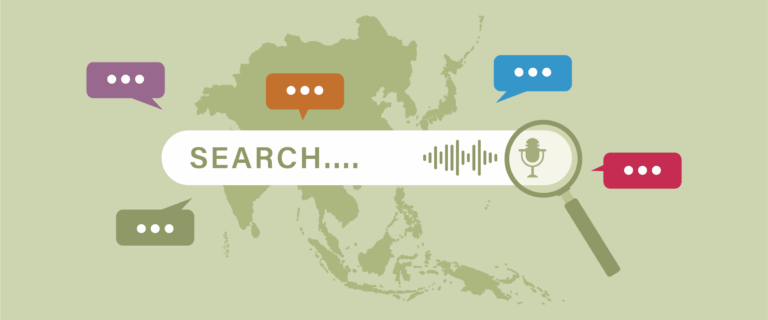Do you want to reach more customers and increase their loyalty? Marketing translation is the answer. Research shows that companies that translate their content to communicate with customers effectively experience a 2.67-fold increase in revenue. In other words, good translations not only attract new customers but also retain existing ones.
In this guide, we’ll explore the ins and outs of marketing translation, from understanding its benefits and challenges to implementing a successful strategy!
What is marketing translation?

Marketing translation involves converting all marketing materials into one or more languages. Imagine being able to communicate your brand’s message to customers around the world in their native language. It’s like having a personal translator for every potential customer, ensuring that your marketing efforts resonate deeply and effectively.
Marketing translation covers various types of content, including:
- Content website
- Social media posts
- Product description
- Brochure
- And various other marketing materials
By translating your marketing materials, you’re not just changing words; you’re building bridges of understanding and trust.
But marketing translation is more than just linguistic accuracy. It requires a deep understanding of cultural nuances and market dynamics. A poorly translated message can lead to misunderstandings, cultural faux pas, and even damage your brand’s reputation. That’s why it’s crucial to work with experienced translators who can navigate these complexities and ensure that your message is conveyed authentically and effectively.
Benefits of implementing marketing translation

Marketing translation is the key to unlocking the global market. Imagine you have an amazing product or service, yet your message is only heard by a small percentage of the world’s population. By translating all your marketing materials into multiple languages, you enable more people to understand and appreciate your offerings.
What are the benefits?
First, your market reach will expand significantly. A study by Common Sense Advisory found that 76% of consumers are more likely to buy from websites available in their language. By translating your content, you open the door to millions of potential consumers around the world.
Secondly, marketing translation increases brand awareness. When your brand looks and sounds familiar to your target audience, they are more likely to remember and recommend you to others.
Third, your revenue will grow. A case study from Redokun states that businesses that invest in translation are 1.5 times more likely to experience an increase in revenue. This is because quality translations allow you to reach a wider audience and increase sales conversions.
Finally, marketing translation makes your business more resilient to change. By diversifying your market, you reduce dependence on a single market. In the event of economic fluctuations in one country, you still have other markets to rely on.
Challenges when you implement marketing translation

In marketing translation, companies often face several challenges. The following are.
- Understanding cultural differences: Every culture has different values and beliefs. Words or phrases that are commonly used in one culture could be considered offensive in another. For example, if you want to market beauty products to the Middle Eastern market, you need to avoid images of women that are too revealing, as this could be considered inappropriate.
- Overcoming language barriers: Every language has various dialects and slang that all native speakers may not understand. For example, the expression “It’s raining cats and dogs” in English does not have the same direct translation in Indonesian.
- Maintaining brand identity: The translation should be consistent with the existing tone of voice and brand identity. For example, if your brand is known for being humorous, the translation should retain that element of humor, while remaining relevant to the local culture.
- Time and resources: Translation, review, and editing usually take a long time. For example, translating a large website into several languages can take months.
- Budget constraints: Cost is often an obstacle for a brand. Hiring a professional translator or using translation tools requires significant costs.
How to implement marketing translation for your brand?
Marketing translation is a strategic initiative that involves several aspects. Here are some steps you can take to implement it.
1. Identify target markets

Before diving into translations, it’s crucial to pinpoint the regions or countries where your products or services can thrive. This involves.
- Identify competitors who are already successful in your target markets and analyze their strategies.
- Explore market surveys and predictions to understand industry trends and potential opportunities.
- Review sales data, customer demographics, and website traffic to identify regions with growing demand for your offerings.
Remember to consider factors like customer feedback, purchase patterns, and regional inquiries to determine where website localization and marketing translations can have the most significant impact.
2. Leverage existing resources
Before embarking on marketing translations, assess your current resources to determine how to allocate them effectively. This includes.
- Assess your team’s language skills and expertise. Determine whether you have the necessary in-house translators or if you need to hire external professionals.
- Evaluate whether you have the resources to train in-house translators or whether outsourcing translation services is more cost-effective.
- Consider the financial implications of hiring translators, purchasing translation tools, or outsourcing to agencies—factor in expenses for proofreading, editing, and quality assurance.
- Assess the time needed for translation projects, including content review, revisions, and approval processes.
Understanding your existing resources can help you make informed decisions about how to allocate them and whether you need to acquire additional resources.
3. Decide content to translate
Not all marketing materials need to be translated simultaneously. Prioritize content based on its potential to engage your target audience, maintain brand consistency, and fit within your budget and timeline. Here are some key areas to consider.
- Website content: This includes slogans, taglines, posts, pages, pop-ups, widgets, SEO elements, and metadata.
- Advertising materials: Translate advertisements, banners, and other promotional materials.
- E-commerce elements: Translate product descriptions, categories, and checkout processes.
- Brochures and marketing collaterals: Translate brochures, whitepapers, case studies, and other marketing materials.
- Email campaigns: Translate email content to reach a wider audience.
- Social media content: Translate posts, captions, and comments on social media platforms.
- Video scripts, subtitles, and voiceovers: Translate video content to make it accessible to a global audience.
4. Select translation tools and collab with translators
When it comes to implementing translations, you have two primary options.
- Translation tools: Automated tools offer quick turnaround times, cost-effectiveness, and scalability. However, they may lack accuracy, cultural nuances, and consistency in terminology and tone.
- Professional translators: Human translators ensure accuracy, cultural sensitivity, and expertise in specific dialects and industries. They can maintain brand voice, consistency, and compliance with local regulations.
A hybrid approach can often be the most effective. Translation tools can be used for initial drafts or routine tasks, while professional translators can be accessed for high-stakes projects or content requiring human expertise.
Consider using a Linguise automatic translation website as a starting point for routine tasks like translating website content. These tools can provide a basic translation, which can then be reviewed and edited by a professional translator with a live front-end editor to ensure accuracy and cultural sensitivity.
This tool uses AI translation technology and NMT and also integrates with 40+ platforms and web builders, such as WordPress, WooCommerce, Shopify, and others. You also don’t need to worry about your business’s SEO because Linguise supports multilingual SEO implementation to make your products appear in search results easily.
Remember to research and compare different translation tools and services to find the best options for your specific needs. When hiring professional translators, look for individuals with experience in your industry and a strong understanding of the target language and culture.
By carefully selecting the right tools and collaborators, you can ensure that your marketing translations are accurate, culturally appropriate, and effective in reaching your target audience.
5. Implement marketing translation strategy
Once you’ve identified your target markets, evaluated your resources, determined the content to be translated, and selected the appropriate tools and partners, the next step is to create a detailed execution plan.
- Establish specific and measurable goals for your multilingual marketing translation initiative, such as increasing website traffic, improving engagement rates, or boosting conversion rates.
- Develop a detailed schedule with milestones for each stage of the translation process.
- Set a sufficient budget and allocate resources efficiently for each task.
- Clearly outline the tasks and responsibilities of each team member or external partner involved in the translation process.
- Create a rigorous review process to ensure the accuracy, consistency, and cultural relevance of all translated content.
- Implement a tracking system to monitor project progress and ensure everything is on track.
For instance, if you want to launch a marketing campaign in the Spanish market, you could set a goal of increasing website traffic by 20% within three months of launching the campaign. Then, you can create a timeline that includes content translation, SEO optimization, and social media campaign launch.
6. Tracking progress

To ensure the success of your marketing translation initiative, it’s crucial to monitor performance regularly. Some tools you can use include.
- Google Search Console and Google Analytics: These tools provide valuable insights into website traffic, keyword rankings, user behavior, and conversion rates for each language version of your website.
- Hotjar: This tool offers heatmaps, session recordings, and user feedback to understand how visitors interact with translated pages.
- SEMrush and Ahrefs: These tools allow you to track international keyword performance, SEO rankings, and traffic trends for translated content.
- Crowdin: This localization management platform facilitates team collaboration, offers analytics, and monitors translation progress.
- Brandwatch: This tool enables you to monitor social media and track brand mentions, engagement levels, and audience sentiment across different languages.
- SurveyMonkey: You can create multilingual surveys to gather feedback from customers worldwide.
By using data from these tools, you can gain actionable insights to optimize your translation efforts.
7. Refining your approach
Markets and consumer preferences are constantly evolving. Therefore, it’s essential to continuously adjust your marketing translation strategy based on the data and insights you gather.
- Analyze performance data to identify the tactics that have been most successful in driving business growth.
- Increase your efforts on the tactics that have proven successful.
- Don’t be afraid to try new approaches, such as testing different messaging strategies, conducting A/B testing on website designs, or exploring emerging digital marketing channels.
By continuously learning and adapting, you can ensure that your marketing translation efforts remain relevant and effective in achieving your business goals.
Remember that marketing translation is a long-term investment. With commitment and the right approach, you can open up new opportunities, reach a global audience, and significantly drive your business growth.
Conclusion

Marketing translation is the key to opening global market doors and increasing customer loyalty. By translating your content effectively, you can reach a wider audience, build trust, and increase revenue.
Starting from identifying target markets, evaluating resources, selecting the right content, and collaborating with the right partners. One tool you can keep in mind is Linguise. With the right approach and use of the right tools, like Linguise, you can ensure that your marketing translation efforts produce optimal results. So, create your Linguise account and enjoy translations of up to 600K words without language limits!





